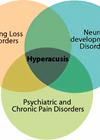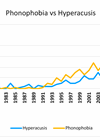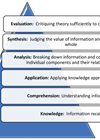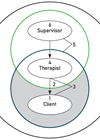Audiology features
Physiological mechanisms of hyperacusis: an update
Hyperacusis is a heterogeneous and complex clinical entity, and proposals about physiological mechanisms should reflect these issues. Ben Auerbach helps us navigate through present knowledge in this area, and proposes future directions for research. Hyperacusis is a debilitating hearing disorder...
Untangling the emotional and physiological aspects of hyperacusis
In hyperacusis, the physiological and the emotional aspects can become deeply entwined. Dr Sarah Theodoroff draws us into her perspectives on this important aspect of the condition. Background Sounds and Emotions The basic act of hearing sounds triggers an emotional...
Collaborating with patients on research priorities in hyperacusis: the James Lind Alliance project
An innovative and inclusive approach to the identification and prioritisation of research questions is to place the views of patients at the heart of the process, and in partnership with clinicians. The application of this to hyperacusis is described by...
Unravelling the mystery of hyperacusis with pain
When a person says that sound causes them pain, how can we understand this, and determine what processes are involved? Bryan Pollard navigates us through what is presently known. Pain has long been underrepresented – and often, completely overlooked –...
Continuing professional development
In this article Siobhán Brennan explores continuing professional development (CPD) in all its glory! She outlines why it’s important to continue learning throughout our careers, highlights some of the challenges facing those trying to undertake CPD and discusses the variety...
Looking at musculoskeletal disorders in audiology
Musculoskeletal disorders are one of the leading cause of sickness absence from work, work disability and loss of productivity across all European Union member states. Isla Beausire is a working audiologist with a personal and professional interest in this subject...
‘Want an upgrade?’ Moral distress in audiology
Ethical practice in audiology has become a hot topic in recent years, particularly in the independent sector where sales can be linked to commissions. Andrea Simpson has explored this issue in her research and shares her insight into the drivers...
The potential benefits of having supervision in clinical practice
Marie Wardle is the Programme Director of the Interpersonal Therapy department in the West Midlands, UK and part of her role is to deliver supervision training courses for therapists in the region. Therapists, whether supporting patients with psychological or physical...
Hearing, tinnitus and hyperacusis in the arts
Hearing loss, tinnitus and hyperacusis are discussed by David Baguley from the unique perspective of their depictions in literature, music, film and paintings. This article provides unusual and invaluable reflective opportunities for the patient-centred clinician! Audiologists and otologists understand hearing...
Tinnitus and music
Marc Fagelson discusses how not just hearing loss, but tinnitus and hyperacusis and impairments to an individual’s ability to process music can adversely affect one’s quality of life, as well as their overall interactions from a societal and personal perspective....
Music is noise
Marshall Chasin recaps what we know acoustically about music and noise, and discusses the potentially damaging levels of music, how temporary threshold shift (TTS) is not necessarily temporary and gives us some considerations for protective devices for musicians. Most of...
Teaching the art of cooking to a hearing impaired chef
Today catering is a hugely popular career choice for many people and there’s a new cookery competition or programme on our TV screens every week. But beyond the media glamour, the kitchen is a challenging and noisy working environment, in...

















